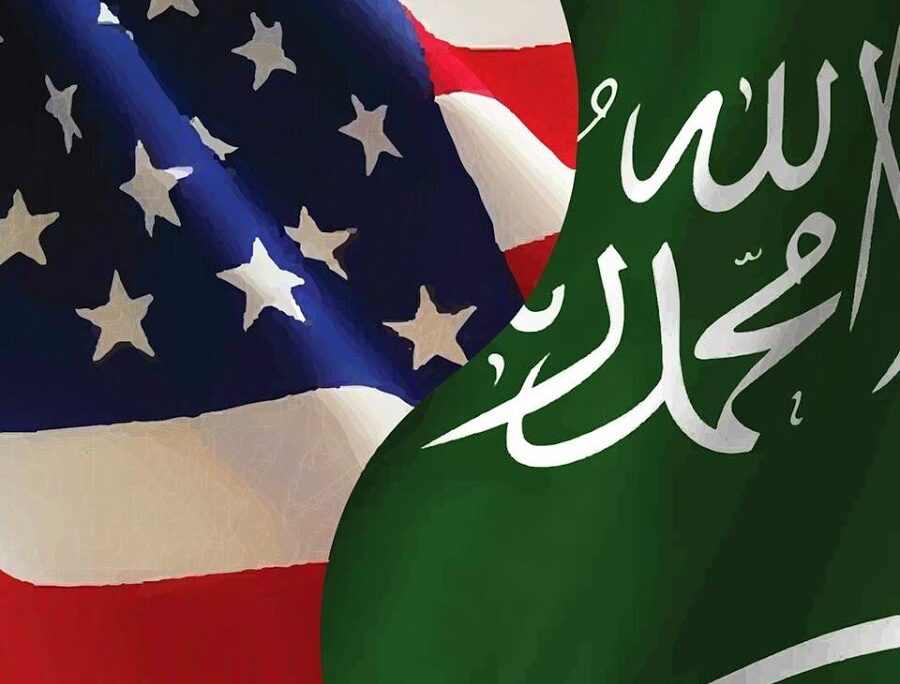To comprehend the dimensions and dynamics of the increasingly deteriorating Saudi-US alliance and its implications on both countries, the Middle East and the world at large, it’s important to look at the alliance against the backdrop of its historical and strategic contexts.
It all started in early 1945 towards the end of World War ll amid worries of a looming shortage of crude oil supply badly needed for post-war reconstruction and economic recovery around the world.
The United States was busy capitalising on the prevailing circumstances to influence the formation process of the post-war global political and economic order. The United Nations (UN) was formally founded barely a month after the end of the war. The United States was increasingly desperate for a reliable source of uninterrupted oil supply for its domestic consumption and in pursuit of the economic aspect of its global ambition.
Meanwhile, a massive crude oil reserve with proven potential to be the world’s largest source of oil had been discovered in the then only thirteen-year-old Kingdom of Saudi Arabia, which was equally in a dire need of a strategic partner with appropriate technological capabilities to develop and operate the oil sector, and indeed oversee the capacity development of generations of Saudis in various relevant engineering and technical fields.
Also, considering the circumstances through which the Kingdom came into existence, it was expecting a partner with military capabilities strong and advance enough to ensure the survival of the Kingdom against any foreign aggression or subversive activities from within.
Preliminary contacts in that regard were established, which culminated in the February 1945 historic meeting on an American naval ship in the Suez Canal between the then US President, Franklin Roosevelt and the founder of Saudi Arabia, King Abdul-Azeez ibn AbdurRahman Al Saud.
Since then, the US secured access to the world’s largest source of crude oil on highly favourable purchase terms, which also opened the Saudi market for US corporations and manufacturers, marking the beginning of the dominance of American-made products in Saudi Arabia.
In return, the US has, among other things, been committed to developing the Kingdom’s defence and intelligence capabilities, and indeed supporting it diplomatically in regional and international politics.
Over the decades, the alliance has transcended administration and reign levels in Washington and Riyadh respectively, to establishment levels in both countries. Likewise, top business and political elites in both countries have maintained networks of friendship with each other’s country.
The first major faceoff between the countries was in 1973 when the then Saudi King, Faisal ibn AbdulAzeez led Arab members of the OPEC into imposing an oil embargo on the US and some other western countries, in protest of, particularly, the US continued support of Israel in its war with Arabs. The embargo caused the worst energy crisis in the US since World War ll. The faceoff deteriorated to the extent that the then US President, Richard Nixon considered invading Saudi, Kuwait and UAE oilfields.
The current deterioration in the US-Saudi relations is a resumption of what had begun during the Barack Obama administration. Though the relations were largely normalised during the Trump administration only to take a nosedive with the coming of President Joe Biden into power.
As a notoriously radical liberal, Barack Obama, assisted by particularly the then Vice-President Joe Biden, Hillary Clinton, the then US Secretary of State and Susan Rice, the then US Ambassador to the United Nations and later US National Security Adviser, vigorously pursued radical political changes across the Middle East and North Africa during the so-called Arab Spring in 2011. The chaos it unleashed, which swept away regimes, destabilised many and indeed threatened the continued existence of all left Saudi Arabia utterly disappointed with the Obama administration.
The Obama administration, on its part, was hugely frustrated by the Saudi’s resolute resistance against the “spring”, which averted Syria-like situations in the Gulf region. The then US Secretary of State, Hillary Clinton was particularly frustrated when she failed to dissuade Saudi Arabia from sending troops to neighbouring Bahrain to prevent looming chaos in the name of protests. In one of her declassified emails, Hillary Clinton lamented that “I warned Saudi Foreign Minister, Prince Saud Al-Faisal against sending the Peninsula Shield Forces to Bahrain in 2011 because this might cause a crisis between the US and Saudi Arabia, but Prince Saud hung up the phone in my face and forces were sent to Bahrain for its protection.”
Now, having come into power as president, Joe Biden was/is, of course, more frustrated than Hillary. That’s why no sooner had he assumed office than he embarked on policies and measures that undermined the longstanding US-Saudi alliance. He even vowed to make a pariah out of the Kingdom.
On its part, Saudi Arabia has since resorted to fighting back largely from within the US political establishment itself using lobbying to blackmail Biden through members of the opposition Conservative Party and even his Democratic Party, for that matter.
In the conclusion, I will, God willing, look at how either country plays its tactics, and indeed how it seeks to blackmail the other into submission.

 Join Daily Trust WhatsApp Community For Quick Access To News and Happenings Around You.
Join Daily Trust WhatsApp Community For Quick Access To News and Happenings Around You.


